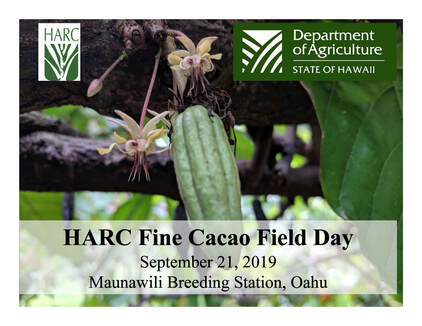Cacao (Theobroma cacao L.)
Cacao (Theobroma cacao L.) is native to Central and South America and has been cultivated since prehistoric times in Mexico. For cacao production to be profitable in Hawaii, high tonnage and superior quality are required. However, Hawaiian cacao plantings are variable in both quality and yield, and are not necessarily adapted to Hawaii's growing conditions. The genotypes of these trees are unknown, and growers are not able to identify the types of cacao trees on their farms. Through the use of DNA marker techniques, we are now able to identify superior cultivars based on their parentages/pedigrees. By the use of simple sequence repeat DNA markers, many individual trees have been fingerprinted. The survey group was found to include Criollo, Trinitario, Forastero and their hybrid types, plus genetically unique trees. The large genetic variation among Hawaii's cacao trees currently grown here suggests it may not be necessary to import additional cacao genotypes to supplement locally available germplasm. The existing variation allows us to select and produce superior genotypes specifically suited for a grower's production environment.
For more information, contact:
Dr. Chifumi Nagai
Phone/fax: (808) 621-1385/621-1399
For more information, contact:
Dr. Chifumi Nagai
Phone/fax: (808) 621-1385/621-1399
HARC Cacao Field Day 2019
|
For a link to the presentation from our Fine Flavor Cacao Field Day held at our Maunawili Breeding Station in September of 2019 please click on the button below. |
Home | About HARC | Administration | Contact us
©Copyright Hawai’i Agriculture Research Center
©Copyright Hawai’i Agriculture Research Center

